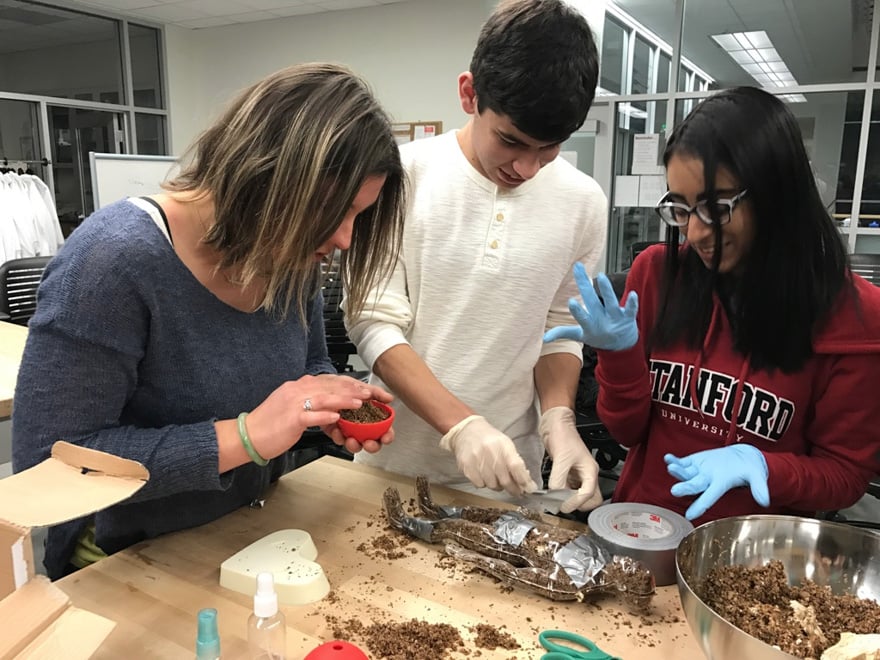A group of students huddled around a lab table in the Shriram Center for Bioengineering & Chemical Engineering to create miniature human bodies — made of living mushrooms. Hosted by the Biological Interdisciplinary Open Maker Environment (BIOME), the workshop taught the students to stuff mushroom spores and substrate into plastic molds to build human figurines. Workshop leader and mushroom art aficionado Ricky Cordova ’18 explained that, in a few weeks, the students will have perfectly sculpted, living pieces of mushroom art to call their own.
BIOME is a recently revived Voluntary Student Organization (VSO) that focuses on creative biological innovation. According to co-president Nelly Weiser ’16, the group’s mission is to make biology more accessible, with students running both long-term biological creation projects and one-time workshops to students.
Bio-tinkering outside of formal research settings is a recent but rapidly growing global phenomenon. Co-president Richard Fuisz ’17 describes BIOME as a way for Stanford students to join this movement.
“We are taking the projects and resources that you might expect from a research lab or even companies and big industry players and bringing it down to a scale where students can really interact with those projects,” Fuisz said.
Encouraging collaboration is another major goal of the group. Cordova, who also serves as outreach coordinator, described BIOME as the biological equivalent of the “makerspaces” generally associated with mechanical engineers or computer engineers. Makerspaces provide the tools and space for like-minded engineers and creative types to collaborate.
Since its inception in 2015, BIOME’s projects have included the construction of a mechanized arm to perform lab titrations, using blocking proteins to manipulate DNA and testing pneumonia detection technology. Aside from the mushroom art workshop, the group has also offered a workshop on the process of performing a Gibson assembly, which is a procedure for stitching together strands of DNA.
Despite the advanced biology that many projects incorporate, members emphasize that BIOME is open to everybody. Alec Lourenco ’20, who leads the dCas9 project, is enthusiastic about the potential for new members to learn lab techniques and other skills they otherwise would not.
“The learning curve is kind of steep, but it’s manageable,” Lourenco said.
The group aims to provide the infrastructure and resources for people to bring in their own ideas, stresses financial manager Chloe Rickards ’18. Although student groups traditionally do not have lab access, “lifeguard hours” with grad students supervising the lab have allowed BIOME students ample freedom to experiment.
“BIOME has projects that will open [themselves] up to people who haven’t been doing any biology since high school and people who haven’t done it at all,” said Rickards.
The group undeniably attracts more bioengineers than any other students but remains accessible to newcomers. One project group is entirely made up of freshmen, including its project leads. They work with a protein called dCas9, which has a variety of applications, such as detecting cancer and identifying nutrient deficiencies in plants using glowing bacteria.
The leadership team hopes to see a capacity for a broader variety of projects in the future, particularly BioArt, but they insist that projects are ultimately driven by whatever students are passionate about.
“With BIOME, there’s a big focus on supporting whatever students can think of,” Cordova said. “That can be research, but there’s also a lot involved in the making aspect of it, the tinkering and creating whatever comes to your imagination.”
Contact Sierra Garcia at sgarcia3 ‘at’ stanford.edu.
